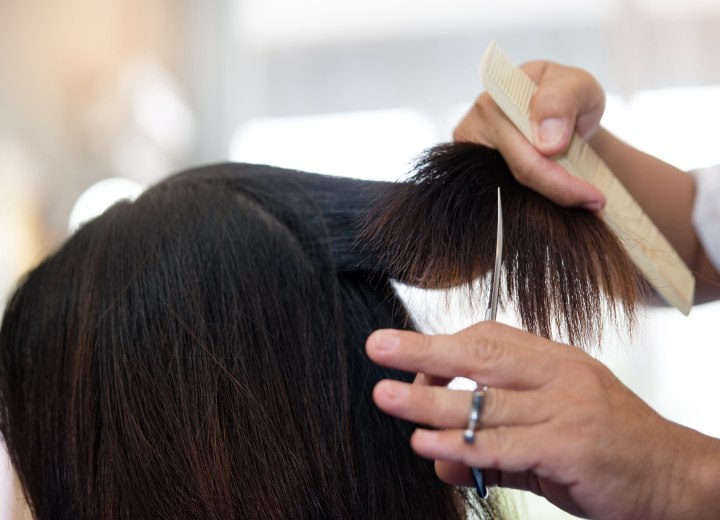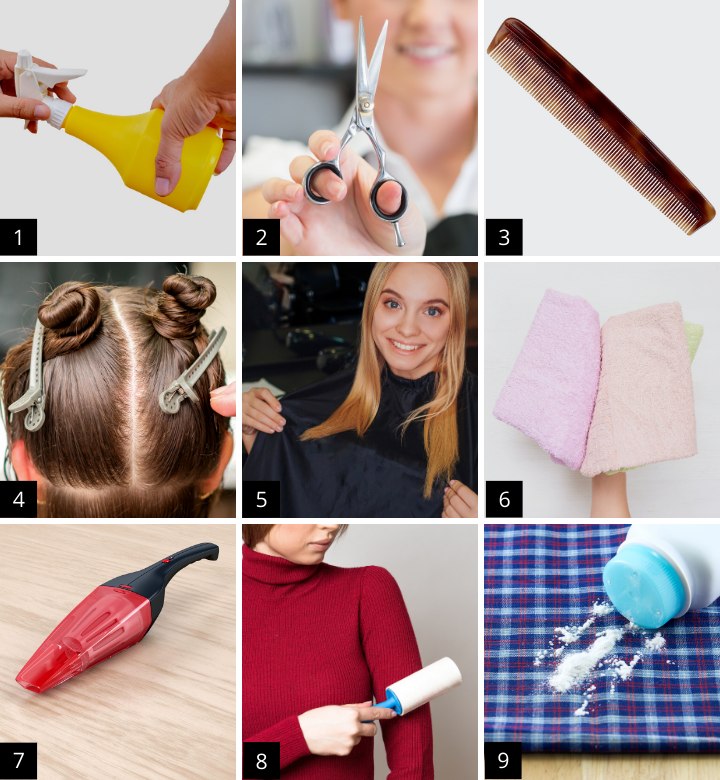How to Cut Hair for an Individual who is Bedridden

Another common issue that arises for those who have long-term serious health issues is getting their hair cut and trimmed to maintain a pleasing style. When a person is severely limited in his or her mobility and therefore is in a near-constant reclining state, often the hair becomes snarled and tangled because of the constant friction against the bedding.
Solutions for this problem vary, but generally fall into two categories: either you resolve the friction issue by changing the type of bedding you use, or you alter the hairstyle to make the problem less of an issue. Many people who have had issues with friction between their hair and their bedding, learn that certain types of fabric weaves and fibers are much more friendly to the hair.
Changing the Hairstyle
The other solution of changing the hairstyle is sometimes preferred, since it also lends itself to making the overall hair care process easier. In these cases, the style generally involves going shorter with the hair, especially in the back of the head where most of the contact with the bedding occurs.
The hairstyle doesn’t have to be all-short either. You could opt for an angled bob cut or a "swing" hairstyle where the forward lengths around the face are left longer and the hair tapers sharply up at the nape of the neck. The specific look chosen would of course depend on the needs of the individual and the face shape.
Cutting the Hair
However, no matter what you choose to do to resolve friction issues, the hair will eventually need to be cut in order to maintain the style. When this happens, there are issues that need to be addressed. First and foremost is how to cut the hair and make sure you control the clippings that are removed. So as you prepare to cut the hair of someone who is bedridden, here are some tools that can come in very handy in such cases:
1. Spray bottle with water*
2. Haircutting scissors
3. Comb
4. Hair clips (to control the hair while you are working)
5. Styling/haircutting cape**
6. Hand-size towels
7. Small vacuum unit
8. Lint roller (the kind with adhesive)
9. Talcum powder

The first thing you have to do in dealing with a bedridden individual is plan your approach. If the individual has a hospital-type bed (one that is adjustable) check to see how much clearance you have around the head of the bed and if it is possible for you to elevate the individual and position yourself behind them as well as to one side or the other. If so, you have better and easier access to the person while you work, and if not, you simply need to be aware so that you carefully plan out what you’re going to do step by step.
Drape the person's neck with a hand-sized towel, and then place your styling and haircutting cape.
{**In my experience working with bedridden patients, I found that it made matters MUCH easier to buy an "extra large" cutting/styling cape and then turn the edges up along the sides and back and stitch them with evenly-spaced vertical seams to create pockets along the perimeter of the cape. What this does is provide a means of catching the pieces of hair that you cut from the head as they slide down the cape. The result is much fewer hairs in the bedding and a more comfortable subject afterward.}
The next step is to carefully comb out the hair to remove any snarls and tangles that are present so that you can separate the hair into sections and clip it out of the way while you begin working on the haircut. You'll want to mist the hair with your spray bottle filled with water to make it easier to section the hair, and it also keeps the hair neater within the sections. Be sure to pay attention to your guides and markers that you choose based on the specific style. This will allow you to ensure a balanced cut. You will, of course, cross-check the cut at the finishing stage, but this is a good way to help you maintain balance as you go.
{* Your spray bottle will most often have clean, clear water in it, but in some cases, particularly with individuals who have very dry, damaged, or porous hair, you may need to use something a little heavier to both condition the hair and allow you to control it better. I find that a good leave-in conditioner is fantastic in most cases. And in cases where the individual has very porous hair (especially if the hair is also very dry) you can usea spray laminator (i.e., a light fruit oil product used to add shine) instead of water. The laminator evaporates slower, making it easier to work with for longer and it also gives the hair a healthier look at the end.}
Proceed with your haircut as indicated by the style you choose, and make note of any instances where hairs escape your prepared catch-pockets. You may not need to do anything about it as you go, but you want to make sure you are able to handle them when you are finished.
Once the haircut is done, carefully remove the cape and towel, and use talcum powder liberally to help get rid of any of the remaining stray hair pieces that may have "escaped". The talcum will also help to prevent itching and irritation if you miss any of those hairs.
After you've taken off the cape, and applied the talcum powder, you should look for any hairs that got away and use your small, handheld vacuum to get rid of them. If they cannot be sucked up by the vacuum because they're clinging to the bedding then you should use your lint roller. The lint roller is also excellent for making sure there are no hair pieces on the person's clothing which could lead to itching or irritation.
©Hairfinder.com
See also:
How to Shampoo a Bedridden or Mobility-Impaired Individual
How to Style the Hair of a Bedridden Individual